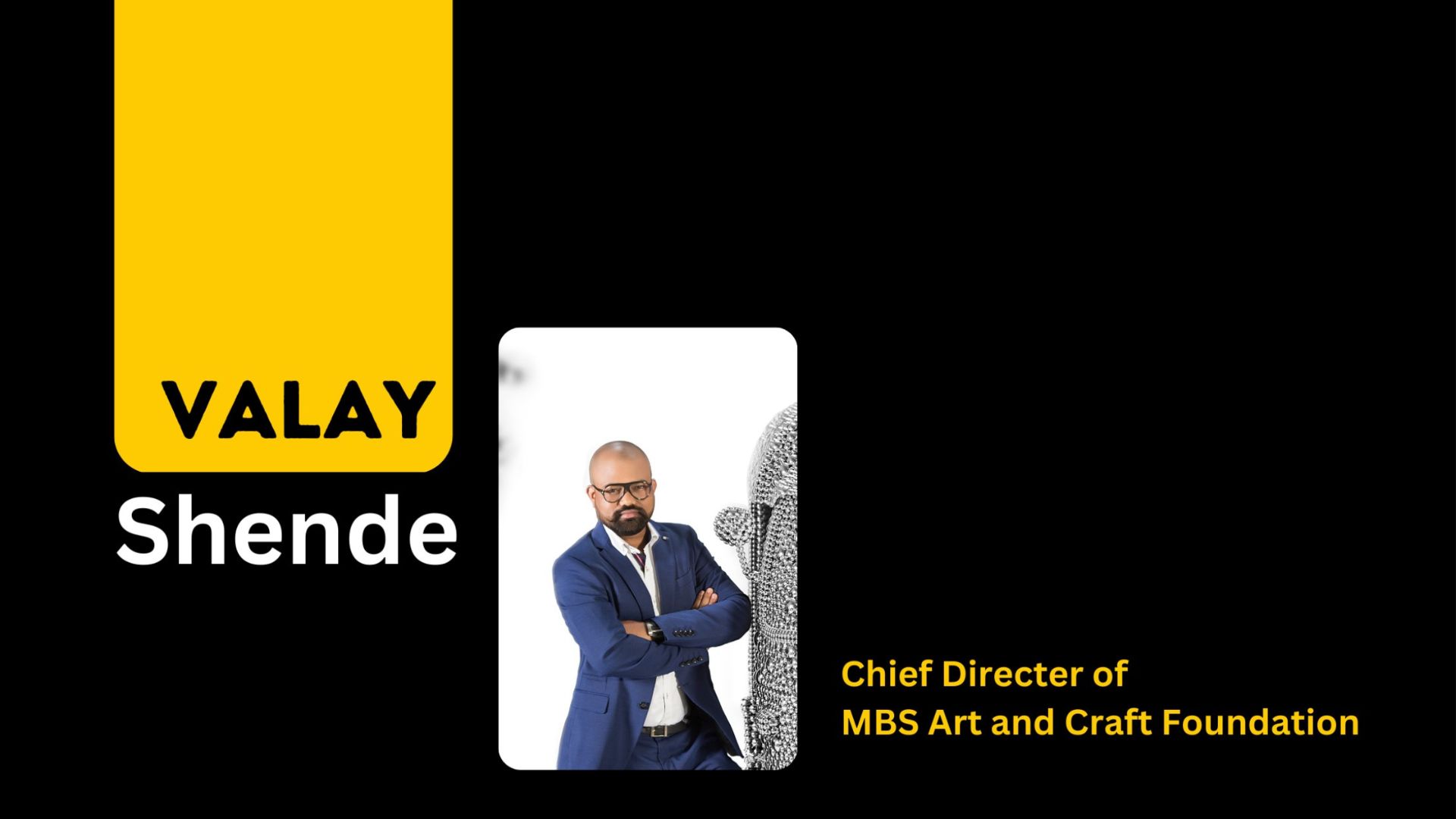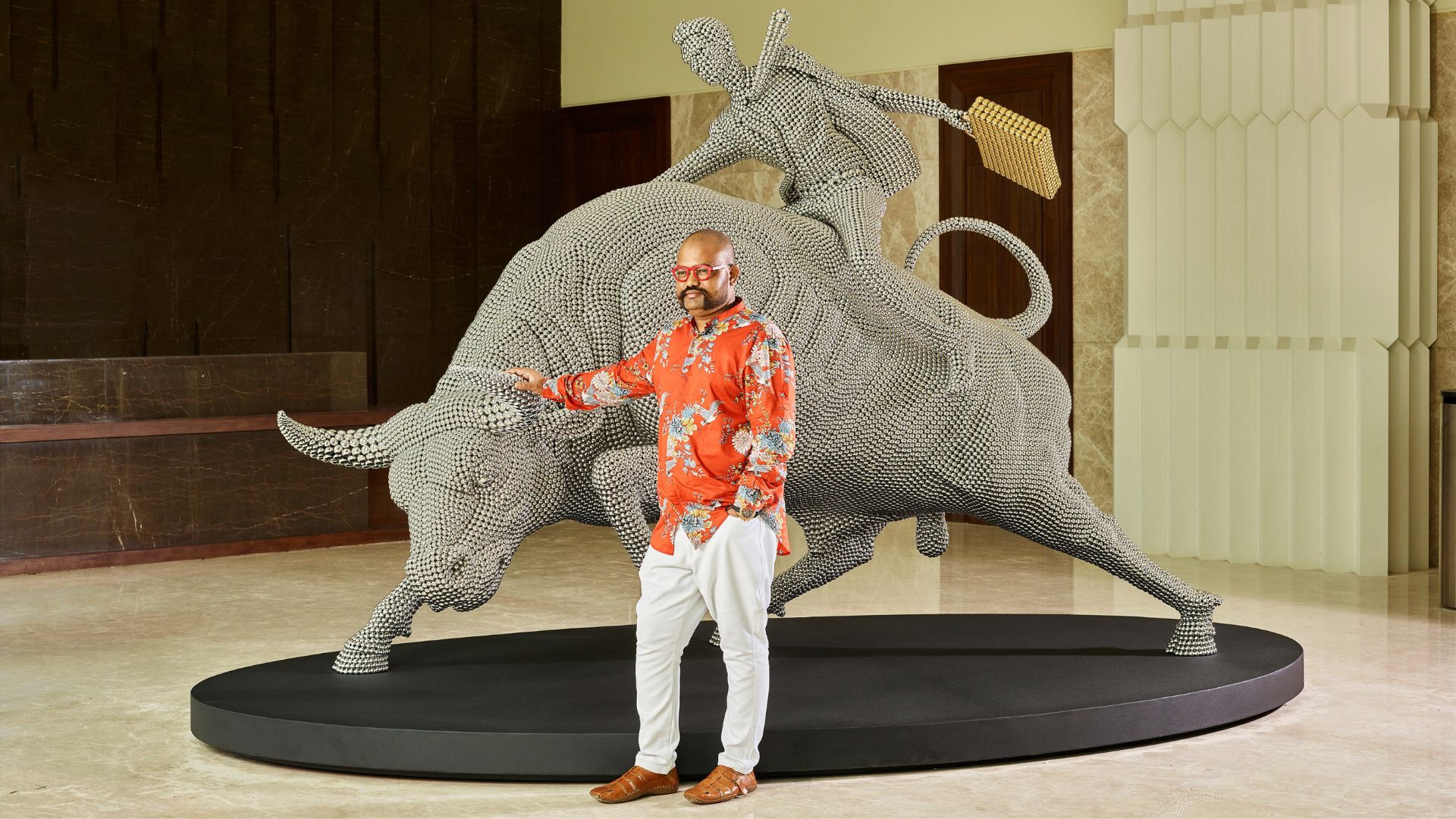Valay Shende is a video artist and sculptor born in Nagpur in 1980, whose work addresses the challenges facing contemporary urban society and its members. In 2000, he received his diploma in art teaching in Nagpur and subsequently trained at the Sir J.J. School of Art in Mumbai, where he graduated with a Bachelor of Fine Arts (BFA) in Sculpture in 2004. In 2006, Shende completed an artist residency at the Open Air Programme, Point Éphémère, in Paris.
Shende's sculptures are notable for their significant physical weight and powerful thematic content. One of his notable works, "Bhaiya Indian," is a six-foot copper-plated fiberglass sculpture of a security guard. The sculpture presents an intriguing twist: while the figure appears to be a traditional guard, he is depicted with eight arms, each holding different objects, including a rifle, an iron box, a stethoscope, a tea kettle, a dead fish, and a mason's plastering tool. Further adding to the work's complexity, the guard’s spinal cord is exposed at the rear, with a set of moving wheels and gears attached, allowing the arms to move when connected to an electric source. The guard is otherwise minimally dressed, with only a slender piece of underwear around his waist and a uniform cap on his head, conveying a stark message about vulnerability and power.
Shende's skill and thematic focus are also evident in other works featuring Buddha, whom he considers a guiding figure in troubled times. One such work, "The Holy Father," features a ninety-four-inch marble fiberglass statue of Buddha riding a dynamic stallion, juxtaposing the calm of the enlightened figure with the energy of the rearing horse. Another piece, "Buddha Right, Mark Wrong," presents a gold-plated Buddha attempting to stop a car, which is adorned with logos of multinational companies and pierced with communist symbols. This work critiques consumerism and capitalism while reflecting Shende's contemplation on societal values.
Other notable works by Shende include "Dead," a sculpture composed of mirror, glass, goat fur, and fiberglass, which comments on the failure of various religions to uplift the common man. His piece "Gun of Counter Revolution" features a firearm with two barrels pointing in opposite directions, symbolizing the duality of violence and the idea that the aggressor can also become the victim.


